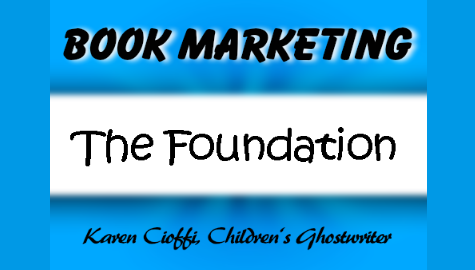Every author has thought it, said it, and heard it: promotion is the roll-up-your-sleeves and dig-in part of writing. It’s the much more time-consuming and challenging aspect of writing that every author needs to become involved with… . . if she wants to sell her books.
To actually sell a book, you need to have a quality product. This is the bare-bottom, first rung of book promotion… the foundation.
The Foundation: Create a Quality Product
The very first step in book promotion is to create a quality product. Hopefully, you noticed I said create a quality product, not just a good story. What this means is that all aspects of your book need to be top-notch.
A. The Story
To start at the very beginning, the first factor to be dealt with is to be sure your story has all the essential elements. According to Yale-New Haven Teachers Institute, there are five major elements of a story: characters, setting, plot, point of view, and theme.
All the elements of a story should complement each other, should move each other forward, draw the reader in, and end with a satisfying conclusion. They should work together to create a story that will be remembered.
Suppose your story is action-packed and plot-driven, but it lacks believable and sympathetic characters – it will fall short. The same holds true if you have a believable and sympathetic character, but the story lacks movement. Again, it will be lacking.
As with all things in life, balance is necessary; the same holds true when writing a story.
Here are four articles that will help you in this area:
Being a Writer – Learn the Craft of Writing
10 Rules for Writing Children’s Stories
Writing for Children – Character Believability and Conflict
How to Write a Story
B. Join a Critique Group
Yes, this is part of creating a quality story.
Even experienced authors depend on the unique perspective and extra eyes that each critique member provides. They will help find: grammatical errors, holes in your story, unclear sentences and paragraphs, overuse of particular words, and weak verbs, among other elements.
They will also provide guidance and suggestions.
C. Editing
Yes, again, this is a necessary step to take to ensure your manuscript is in the best shape possible before it becomes a book.
Look for an experienced and qualified editor to help tweak your manuscript. But, before you send it off to be edited, self-edit it first.
There are a number of articles out there in cyberspace on self-editing. Take the time and read a few, then go over your manuscript.
D. Cover and Design
This step is more relevant to those who decide to self-publish or use a Print-on-Demand (POD).
The cover (including the back cover) is the first impression a reader will usually have of your book; the second impression is the interior design. These aspects are just as important as the story itself.
I’m sure you’re familiar with the expression that you only get one shot at making a good first impression. Well, you can relate that to your book cover.
Don’t skimp on time, effort, or money when coming up with your book’s cover and design.
Tip: If you are writing a children’s book, do not do your own illustrations unless you’re a professional illustrator.
NEED HELP WITH YOUR STORY?
I’m a working children’s ghostwriter, rewriter, and coach. I can help turn your story into a book you’ll be proud to be the author of, one that’s publishable and marketable.
OTHER HELP I OFFER:
HOW TO WRITE A CHILDREN'S FICTION BOOK
A DIY book to help you write your own children’s book.
FICTION WRITING FOR CHILDREN eCOURSE
4-Weeks / 8 Sections Guided Self-Study Program
You can contact me at kcioffiventrice@gmail.com.

Put Your Characters Behind the Wheel: Character Agency
Writing for Children: The Power of Patterns with Examples
Children’s Book Illustrations: Styles, Sizes, and AI


2 thoughts on “Book Marketing – The Foundation”